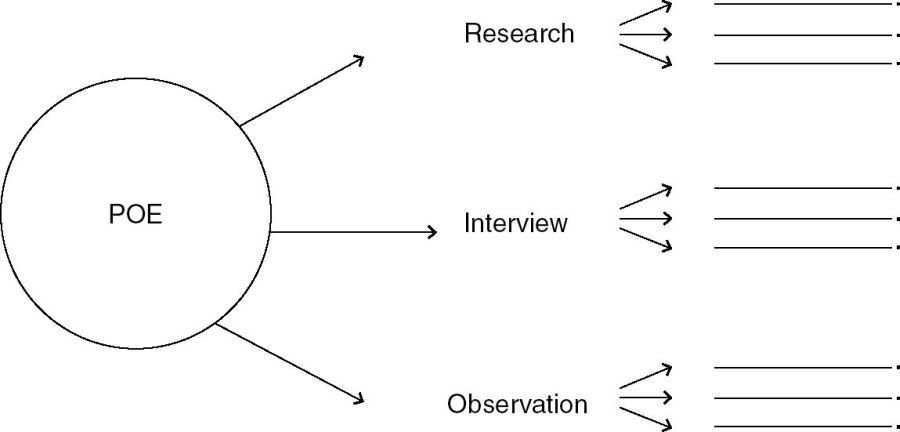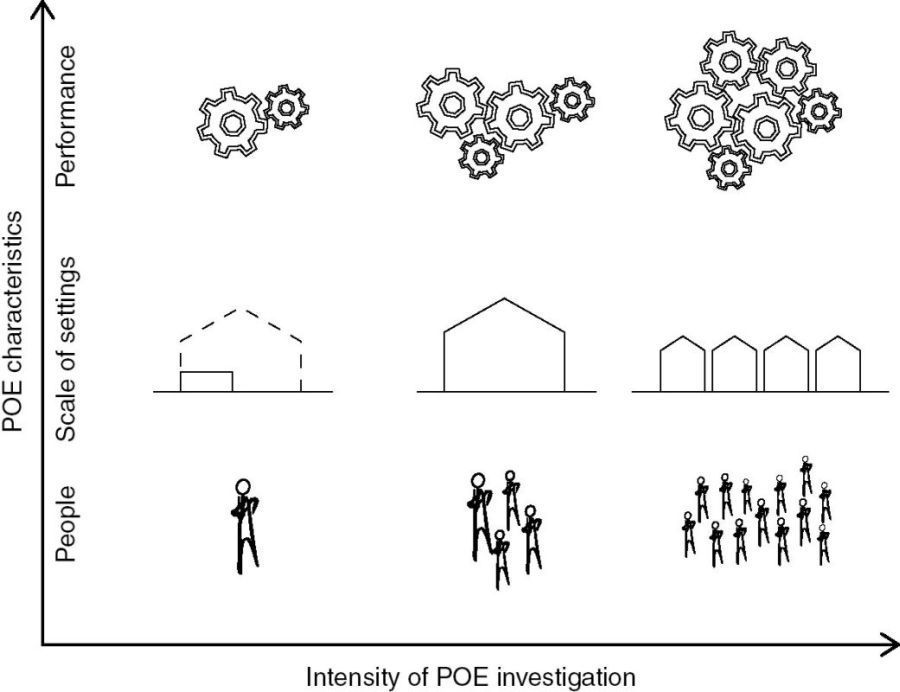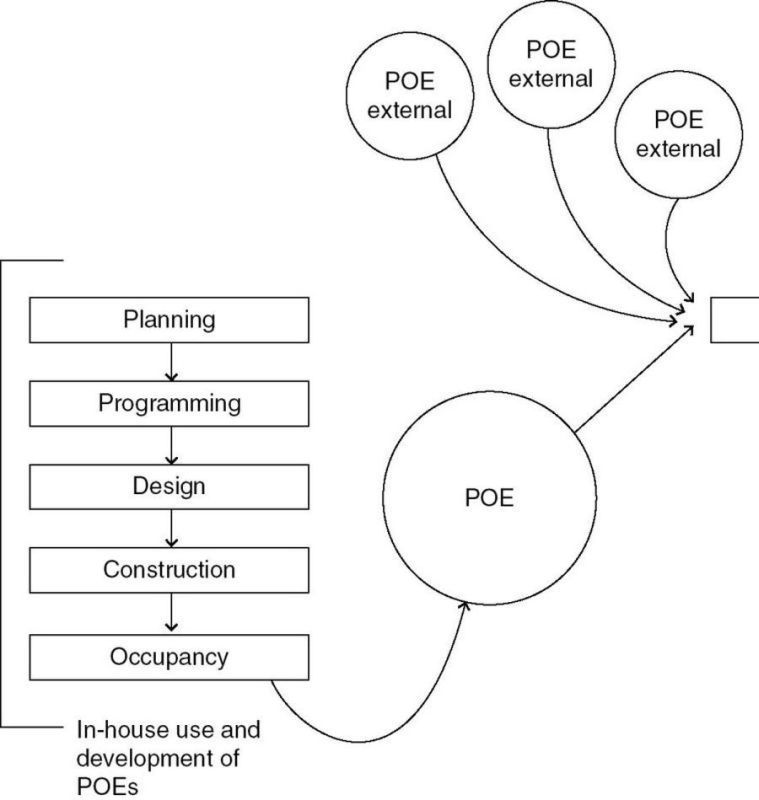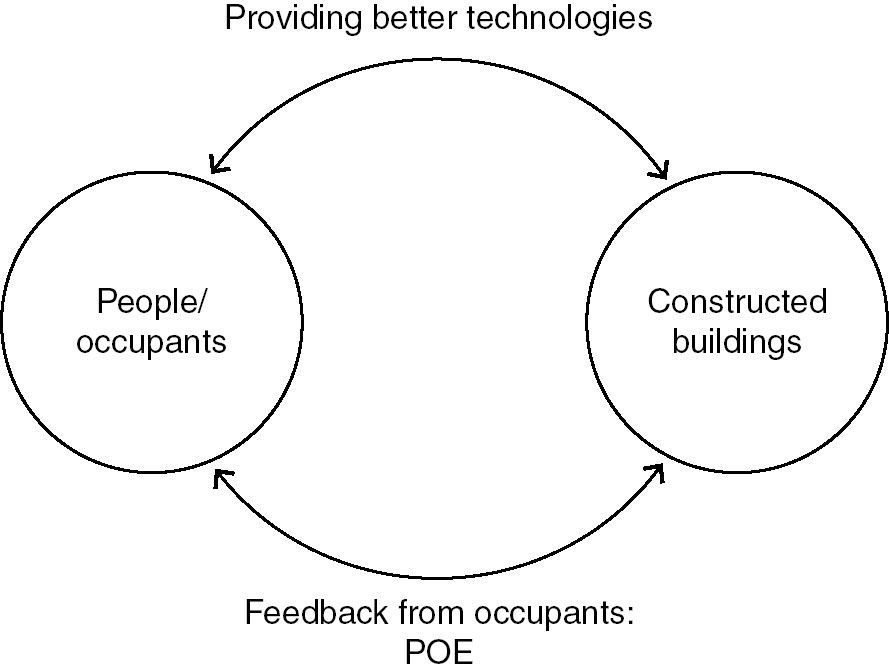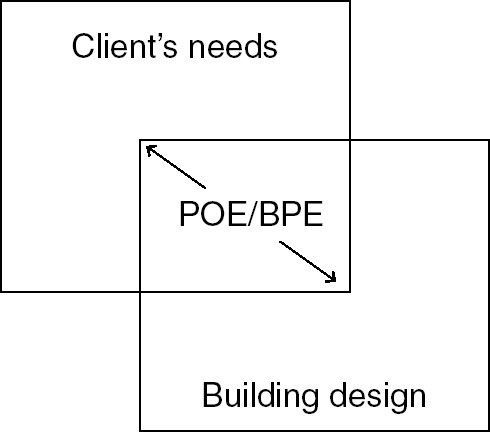HISTORICAL REVIEW OF BUILDING PERFORMANCE EVALUATION
Introduction
The goal of this chapter is to chronicle the history and evolution of the field of post-occupancy evaluation (POE) as it evolved into building performance evaluation (BPE), and to identify major milestones in its development. This chapter outlines the progression of evaluation efforts. This was undertaken by categorizing evaluations by building types, ranging from residential housing to offices, hospitals and government facilities, or just about any facility type for that matter. Findings included: large organizations with repetitive building programs were the major players in POE/BPE projects; major concentrations of POE/BPE efforts were found in English-speaking countries like the US, UK, Australia, New Zealand, and Canada. Major outcomes and benefits of POE/BPE case study evaluations were the development of guidelines for the planning and design of future buildings. The implications of the evolution of POE/BPE are increased sophistication of methodologies and system-wide applications in a growing number of countries around the world.
The evolution of post-occupancy evaluation
Beginning in the late 1960s, evaluation case studies of university dormitories were carried out by Sim van der Ryn (1967) of the University of California, Berkeley, and Victor Hsia (1967) of the University of Utah. While they were not called post-occupancy evaluations (POEs), these evaluations were the precursors for the first systematic attempts at assessing building performance from the building users’ point of view (Connell and Ostrander 1976a).
Inspired by Van der Ryn and Hsia, one of the authors’ (Preiser 1969) Master’s theses also focused on evaluating dormitory performance, i.e. at Virginia Tech. It employed political science rating scales (the Thurstone Scale of Equal Appearing Intervals) in innovative ways, which have an error rate of no more than 3–5 percent. These rating scales were used to create quality profiles, as perceived by the students living in three very different types of dormitories. Ironically, the newest ones looked like high-rise prisons, and the oldest looked like Oxford-style, two-story walk-up structures, and not surprisingly, they scored highest.
TABLE 14.1 Milestones in the evolution of POE/BPE
Year | Author(s) | Building type(s) | Contribution to the field |
1967 | Van der Ryn and Silverstein | Student dormitories | Environmental analysis; concept and methods |
1968 | Manning | Offices and schools | Comprehensive building appraisal |
1968 | Sanoff | Any facility type | Evaluation Techniques for Designers – first monograph on POE |
1969 | Preiser | Student dormitories | Environmental performance profiles; correlation of subjective and objective performance measures |
1971 | Field et al. | Hospital | Multi-method approach to data collection |
1972 | Markus et al. | Any facility type | Cost-based building performance evaluation model |
1974 | Becker | Public housing | Cross-sectional comparative approach to data collection and analysis |
1975 | General Services Administration (GSA) | US courts design guide | Office system performance standards (Building Research Board 1987b) |
1975 | McLaughlin | Hospitals | “Evaluation of Hospitals” – first article published on POE |
1975 | Veterans Administration | Veterans’ hospitals | POE of the Veterans Administration Hospital in San Diego (Building Research Board 1987) |
1976b | Connell and Ostrander | Government facilities | Post-occupancy evaluation of mail delivery and communications in bachelor enlisted housing |
1976 | Goodrich | Public square | Observational POE methodology |
1976 | US Army Corps of Engineers | Military facilities | Design Guide Series with updatable, state-of-the-art criteria (Building Research Board 1987) |
1978 | Bechtel and Srivastava | Housing | Comprehensive review of POEs of housing |
1979 | Public Works – Canada | Government facilities | POE incorporated into project delivery system |
1980 | Daish et al. | Military facilities | POE |
1980 | Marans | Offices | Evaluation model linking perceptual and objective attributes |
1981 | Palmer | Any facility type | Programming linked to POE methodology |
1982 | Parshall and Peña | Any facility type | Simplified and standardized evaluation methodology for practitioners |
Duffy and Chandor | Offices | Orbit 1: Systems design standards | |
1984 | Brill et al. | Offices | Linking worker productivity and office design |
1985 | Davis et al. | Orbit 2 Study | Rating Process on Organizations, Buildings and Information Technology |
1987a | Building Research Board | Any facility type | Post-Occupancy Evaluation Practices in the Building Process |
1988 | Preiser, Rabinowitz, and White | Any facility type | Post-Occupancy Evaluation – first book on POE methodology |
1989 | Farbstein et al. | US Postal Service | POE and organizational development |
1989 | Preiser | Any facility type | Building Evaluation – POE case studies from around the world |
1992 | Sanoff | Any facility type | Integrating programming, POE, and user participation in design |
1996 | Baird et al. | Any facility type | Building Evaluation Techniques – first comprehensive methods book |
1997 | Preiser and Schramm | Any facility type | “Building Performance Evaluation” – conceptual BPE framework |
2001 | Federal Facilities Council | Any facility type | Learning From Our Buildings – Federal POE/BPE overview |
2001 | National Clearinghouse for Educational Facilities | Educational facilities | Feedback-based design standards for schools |
2003 | NCARB | Any facility type | Improving Building Performance – a study guide for architects |
2005 | Preiser and Vischer | Any facility type | Assessing Building Performance – global BPE book |
2005 | Szigeti and Davis | Any facility type | Performance Based Building |
2006 | Zeisel and Eberhand | Any facility type | Example POE – The Jerusalem Center for Multi-Handicapped Visually Impaired Children |
2007 | Hartman | Any facility type | “Measuring a Building’s Success” – an article reviewing the potentials and fears of POEs for building designers |
2008 | Gonchar | Any facility type | “Looking Back and Moving Forward” |
2009 | Ireland | Any facility type | Importance of collaboration and building analysis – examples using information about LEED and intelligent building design |
2009 | OECD | Educational facilities | First coordinated European effort |
Spataru et al. | E.ON Research House | Research on “creative energy homes” | |
2011 | Borg | Any facility type | “A Dossier on Post-Occupancy Evaluation” |
2012 | Kampschroer | US federal buildings | Building requirements and evaluations for federal buildings |
2012 | Lenoir, Baird, and Garde | Educational facility | How to achieve thermal comfort through the use and efficiency of the ENERPOS building in La Réunion |
2012 | Mallory-Hill, Preiser, and Watson | Any facility type | Enhancing Building Performance – state-of-the-art book on process model, methodology, and case studies |
2012 | Newton et al | Educational facilities | Australia’s “Building the Education Revolution” – template designs critiqued by an interdisciplinary team in POEs reviewing pedagogy, sustainability, and life-cycle analysis |
Source: authors.
FIGURE 14.1 An in-house approach to the use of post-occupancy evaluations
Source: Andrea Hardy.
By the mid-1970s, the first publications with the term “POE” in their title appeared, the first of which was authored by Herb McLaughlin of KMD Architecture in San Francisco in the AIA Journal issue of January 1975. He and a team of consultants had performed POEs on hospitals in Utah and in San Francisco. Since then, over the past 35 years, McLaughlin has been an ardent supporter of POE as a tool for in-house knowledge building in architecture and design firms (McLaughlin 1997). Table 14.1 summarizes the history and milestones in the evolution of POE/BPE.
FIGURE 14.2 Key components of a post-occupancy evaluation
Source: Andrea Hardy.
FIGURE 14.3 Categories for post-occupancy evaluations from simpler indicative to more complex diagnostic POE
Source: Andrea Hardy.
Then there was the first methodological review of POE techniques that was also commissioned by the AIA Research Corporation (Connell and Ostrander 1976b). By the 1980s, a great number of POEs were being carried out in the UK, Canada, New Zealand, Australia, and the US focusing primarily on public works projects, government buildings, airports, and similar facility types (Figure 14.1).
Also in the mid-1980s, the National Academy of Sciences (1987) established committees on opportunities for improvement in the practices of programming, post-occupancy evaluation, and database development, which linked the two conceptually. What is really interesting to know is: have the recommendations of the reports been realized over the past 35 years? Yes, indeed they have, especially in the information technology arena, which was in its infancy at that time. A seminal and first POE textbook was published by Preiser, Rabinowitz, and White (1988). The appendix of that book is perhaps the most interesting part, because it presents measurement techniques for getting feedback on the quality of facilities. Considered to be a companion volume to Post-Occupancy Evaluation, the book Building Evaluation was published a year after it (Preiser1989), with case studies from around the world (Figure 14.2).
The early POE framework (Preiser, Rabinowitz, and White 1988) provided three levels of effort, sophistication and data-gathering techniques, cost, manpower, etc.: indicative, investigative, and diagnostic POEs (Figure 14.3). Within each of these were three steps: (1) Planning: reconnaissance and feasibility, resource planning, research planning; (2) Conducting: initiating on-site data collection process, monitoring and managing data collection procedures, analyzing data; and (3) Applying: reporting findings, recommending actions, reviewing outcomes. Finally, the three categorizations in carrying out POEs were: people (individuals, groups, and organizations); scales of settings (rooms, buildings, and building complexes); and three levels of performance (according to the habitability framework). As this field progressed, this framework was considered to be quite simplistic, and, in many ways, inadequate.
One example of POEs using this framework is an evaluation done on the Jerusalem Center for Multi-Handicapped Visually Impaired Children. Preiser was brought on early as a consultant to architect Adina Darvasi and then again after the building’s completion by the owners to conduct a POE. It was through research, conducting interviews, and observing that Preiser was able to pinpoint numerous problems with the building and then provided the client with various solutions to increase the efficiency and overall use of the building for its disabled occupants (Zeisel 2006).
As POE strategies and techniques continue to evolve, the main goal behind these studies and evaluations is to share their findings. The intent is to help building technologies and designs to move forward and develop. Completed POEs “can help identify strategies that work best, those that need refinement, and those that should not be repeated on future projects.” For even further building analysis, the owner and architect can conduct a BPE (Gonchar 2008)
Toward building performance evaluation
In the mid-1990s, issues pertaining to the building delivery cycle, as well as the life-cycle of a building – a meta-level approach to building evaluation – were investigated by Preiser and Schramm (1997), and subsequently, an integrative framework/process model for building performance evaluation was developed. In it, post-occupancy evaluation represents only one of six internal review loops, and the framework focuses on the entire life of a building, as well as anticipating the next building cycle.
The key concept was a gradually evolving knowledge base (Federal Facilities Council 2001) that translated into building performance criteria: issues like health, safety, security; building codes; functionality and guideline materials; and last, but not least, the social, psychological, and cultural aspects of building performance (Figure 14.4).
FIGURE 14.4 In-house and external influences through the use of post-occupancy evaluations
Source: Andrea Hardy.
Major trends and their implications
The role of evaluation
Socio-critical, building performance, and aesthetic evaluations have been largely abandoned in recent years in favor of the faux-affirmation of pseudo-scientific data porn and diagrammatic “meaning” writ large. If evaluations are by definition empirically sound, why does criticism fall so far behind to mere populism? Why are quantitative measures of user experience so frequently omitted from the design process? With the combination of observed data as a tool, not a picture, and practical willingness to integrate criticism into the design process as a dynamic tool for evaluation, architecture can reclaim a critical stance grounded in unmediated user experience as the highest aspiration for beauty, technology, and space. In other words, the most powerful tool we can exercise as architects is that our buildings engage directly and sometimes unpredictably with our users. The architectural imperative is then to produce work that holds the user in high enough esteem to allow them to both form and communicate judgment.
Conceptual/theoretical implications
Descriptive criticism does not seek to judge nor even intend to interpret, but to help people see what is actually there. In all of its types it does not offer judgments, but merely depicts what exists, such as how people move through space, and/or provides information about the social, political, and economic context within which built environments are designed and created.
Methodological implications
The expanded, three-pronged approach to architectural criticism advocated here implies direct feedback on the experienced quality of built environments involving all major stakeholders. Measuring stakeholders’ responses through the use of adjective descriptor scales or rating scales ranging from very satisfied to neutral to very unsatisfied means that respondents need to be presented with data-gathering instruments, whether through Web surveys or hard copy surveys. Furthermore, a panel consisting of laypersons and expert judges will establish the agreed-upon weightings of environmental attributes ranging from health, safety, and security issues to cultural and aesthetic ones.
However, it is the building’s physical evaluation that is feared most by the building’s architect – “the fear of what you might discover.” In an age where lawsuits are almost guaranteed at the end of a project, it is a legitimate concern for all involved in the building’s design and construction. If architects, engineers, and contractors work collaboratively, this may eliminate fears of conducting a BPE, although it should also be recognized that POEs/BPEs could help prevent such lawsuits. Once again, the objective of these somewhat more complicated measurements is to move from highly subjective to more objective criticism (see Chapter 15 by Bordass and Leaman).
Impact on future facility programming and design
It is hypothesized that this more balanced approach to assessing the ingredients that constitute the quality of experienced architecture will lead to better and more architectural coordinated programs and designs that advance the field way beyond what meets the eye. It will be superior in quality by considering the entire range of human experience in the built environment (Figure 14.5).
Impact on emerging and future architectural practice
With a newly empowered clientele, a more savvy cadre of practitioners, and the communication and production opportunities provided by a globally networked profession, the potential impacts on practice cannot be overstated (Figure 14.6).
The architect becomes a part of this larger network by allowing objects and humans to communicate with themselves and each other, and then to be manipulated over time. BPEs show the importance to the architect of how the building is lived in by highlighting missed opportunities in the design process and wrong assumptions when anticipating the afterlife of a building. In turn, this helps to support and evolve these flexible and networked building technologies, which tie together the architect, engineers, owner, occupants and surroundings (Borg 2011). Then when being held accountable or justifying costly design moves, emerging professionals will be continually challenged to engage with manufacturing technologies that allow their visions to be operative and cost-effective. Revolutions and evolutions can be made in standard building practices from normative material dimensions to inter-operability between distinct disciplines and trades, thus anticipating that trades and manufacturers will evolve to provide cost-effective means of enabling ambitious design because both clients and architects are working together to normalize the previously “ambitious.” This loop is continuous and is based on each party driving for a synthesis of their interests, ultimately furthering the efficiency, quality, and satisfaction from the built environment.
FIGURE 14.5 People influence buildings and buildings influence people
Source: Andrea Hardy.
FIGURE 14.6 POEs/BPEs allow for a more direct interaction and influences between clients, occupants, and buildings
Source: Andrea Hardy.
Impact on furthering sustainable building practices
For many architects and buildings owners, when designing a new building, one of the goals of the design is typically for the structure to be sustainable. Sustainability should not be the main goal driving a building’s design, but rather a benefit resulting from intelligent buildings and designs. Intelligent buildings and designs are developed through early collaboration between the client, architect, engineers, and contractor along with the continuing analysis of buildings after their completion (Ireland 2009)
It is through the evolution of intelligent buildings that building performance evaluation practices, and the study of how technologies and spaces are actually used by the buildings’ occupants, continue to develop. A study from the UK on “Creative Energy Homes,” specifically that of the E.ON Research House, was able to analyze and demonstrate the behavior and patterns of occupants within a replica of the existing 1930s detached home. The conclusion of this study demonstrated the importance of designing for the comfort and use of the occupant, and also confirmed the importance of a BPE to make it possible to do this type of research (Spataru et al. 2010).
FIGURE 14.7 Each examination room has a unique view – some of the sky, others the parking lot
Source: buildipedia.com, April 6, 2014; Credit: Iwan Baan.
FIGURE 14.8 Imagine having to wash windows after a sand storm
Source: buildipedia.com, April 6, 2014; Credit: Gehry Partners LLP.
What can be considered an intelligent building? Is it the Cleveland Clinic Lou Ruvo Center for Brain Health in Las Vegas, designed by Frank Gehry (see Figures 14.7 and 14.8)?
Another building that has been studied to observe the use and comfort of its occupants is the ENERPOS building in La Réunion. Because of the building’s orientation, design, and interactive passive systems, the educational facility provides thermal comfort for its occupants for the majority of the year. It has been noticed that if there was documentation of how to most efficiently use the building’s passive systems, such as operable windows and ceiling fans, the building performance would be even greater (Lenoir et al. 2012).
Starting with the opposite approach, the E.ON and ENERPOS buildings were constructed with the idea that they would be analyzed, studied, and written about. Australia’s Building the Education Revolution in 2009 created a substantial amount of funds for the construction of educational facilities in 2009. These buildings were essentially templates that were quickly designed and constructed to help boost the local economies. Recently, interdisciplinary teams were brought in to analyze the pedagogy, sustainable design, and life-cycle analysis for three examples of these quickly designed buildings to analyze the structures. The BPEs for these buildings showed that the spaces are being utilized successfully by both faculty and students, but also reiterate the importance of interdisciplinary design teams and educating the faculty on the building systems because of some of the struggles that the faculties have had with the different technical building systems. This study also demonstrates the importance of BPEs to fix smaller problems within the schools to make them as efficient as possible (Newton et al. 2012).
As sustainable designs and technologies continue to evolve, the US government has done its part to ensure that intelligent design becomes a permanent standard rather than a passing phase in architectural history. Kevin Kampschroer outlined some major breakthroughs to the US House of Representatives for sustainable design for federal buildings: the Energy Policy Act of 2005, Energy Independence and Security Act of 2007, the Federal Leadership in Environmental, Energy and Economic Performance program, and many others. Kampschroer continues by explaining that the US government in fact realizes the impacts that buildings have not only on the environment, economy, and natural resources but also on the health and performance of the occupants. One of the smaller but potentially most beneficial practices for federal buildings is the requirement that they need to conduct a study every five years to evaluate and compare building evaluation systems (Kampschroer 2012).
Lastly, Leadership in Energy and Environmental Design (LEED), which was founded by the US Green Buildings Council (USGBC), has become very influential within the development of sustainable design over the past ten-plus years. While quite possibly being best known for LEED’s checklists to design efficient buildings, how do these certified buildings function five years down the road? Are they really cost-effective and as sustainable as these checklists suggest? In 2008, USGBC did a study on 121 LEED certified buildings, which found a significant difference between the intended energy use of the building and what was actually being reported as their current energy uses. This study has led the organization to provide new requirements such as LEED Advanced Commissioning and Measurement and Verification credits. These credits require the owner to provide information over the years to prove that their building does in fact perform as it was designed and intended to (Ireland 2009).
Conclusion: impact on the future of architectural design education
The pedagogical implications are already established but have not found traction in the profession as it exists today. The willingness to experiment with new technologies and design methodologies is the foundation of any design program given that the architectural process is cumulative over a lifetime. Furthermore, facility with software, awareness of social networks at all scales, and mental acuity and flexibility define the baseline curricular demands of contemporary universities. Once in the workforce, these tools are traded for top-down demands of older generations. With increased expertise, and a concise way for all parties to communicate, students can emerge into the workforce with a refined sensitivity to clients and the profession that will minimize the “shock” of entering real-world practice.
References
Baird, G., J. Gray, N. Isaacs, D. Kernohan, and G. McIndoe (eds) (1996) Building Evaluation Techniques. New York: McGraw-Hill.
Bechtel, R. and R. Srivastava (1978) Post-Occupancy Evaluation of Housing. Washington, DC: US Department of Housing and Urban Development.
Becker, F. D.(1974) Design for Living: The Resident’s View of Multi-Family Housing. Ithaca, NY: Workplace Design and Productivity.
Borg, A. (2011) “A Dossier on Post-Occupancy Evaluation.” Architecture Australia 100(5).
Brill, M., S. T. Margulis, and E. Konar (1984) Using Office Design to Increase Productivity, Volume I. Buffalo, NY: Workplace Design and Productivity.
Building Research Board, National Research Council ( W. F. E. Preiser, Committee Chairman) (1987a) Post-Occupancy Evaluation Practices in the Building Process: Opportunities for Improvement. Washington, DC: National Academy Press.
Building Research Board, National Research Council ( W. F. E. Preiser, Committee Chairman) (1987b) Programming Practices in the Building Process Opportunities for Improvement. Washington, DC: National Academy Press.
Connell, B. R. and E. R. Ostrander (1976a) Methodological Considerations in Post-Occupancy Evaluation: An Appraisal of the State of the Art. Washington, DC: AIA Research Corporation.
Connell, B. R. and E. R. Ostrander (1976b) Post-Occupancy Evaluation of Mail Delivery and Communications in Bachelor Enlisted Housing. AIA Research Corporation.
Daish, J., J. Gray, and D. Kernohan (1980) Post Occupancy Evaluation Process Guidelines. School of Architecture Publications. Victoria, NZ: University of Wellington (2nd edn, 1983; 3rd edn, 1986).
Davis, G., F. Becker, F. Duffy, and W. Sims (1985) ORBIT-2 – Report of the ORBIT-2 Project and Rating Process on Organizations, Buildings, and Information Technology. Research Report. Norwalk, CT: Harbinger Group.
Duffy, F. and M. Chandor (1983) The Orbit Study – Information Technology and Office Design. London: DEGW/Eosys.
Farbstein, J., M. Kantrowitz, B. Schermer, and J. Hughes-Caley (1989) “Post-Occupancy Evaluation and Organizational Development: The Experience of the United States Post Office.” In W. F. E. Preiser (ed.), Building Evaluation. New York: Plenum Press, pp. 327–38.
Federal Facilities Council (ed.) (2001) Learning from Our Buildings: A State-of-the-Practice Summary of Post-Occupancy Evaluation. Washington, DC: National Academy Press.
Field, H. H., J. A. Hanson, C. J. Karalis, S. Lippert, and P. G. Ronco (1971) Evaluation of Hospital Design: A Holistic Approach. Boston: Tufts-New England Medical Center.
Gonchar, J. (2008) “Looking Back and Moving Forward.” Architectural Record 192(2): 160–69.
Goodrich, R. (1976) Post-Design Evaluation of Centre Square Project. Philadelphia: Atlantic Richfield.
Hartman, H. (2007) “Measuring a Building’s Success.” Architects’ Journal 226(18): 41.
Ireland, B. (2009) “Performance Anxiety.” Electrical Construction and Maintenance 108(11): 18–25.
Kampschroer, K. (2012) “House Science, Space, and Technology Subcommittee on Investigations and Oversight Hearing: The Science Behind Green Building Rating Systems.” Federal Information and News Dispatch.
Lenoir, A., G. Baird, and F. Garde (2012) “Post-Occupancy Evaluation and Experimental Feedback of a Net Zero-Energy Building in a Tropical Climate.” Architectural Science Review 55(3): 1–13.
McLaughlin, H. (1975) “Post-Occupancy Evaluation of Hospitals.” AIA Journal, January: 30–34.
Mallory-Hill, S., W. F. E. Preiser, and C. Watson (eds) (2012) Enhancing Building Performance. Oxford: Wiley-Blackwell.
Manning, P. (1968) “Appraisals of Building Performance: Their Use in the Design Process.” The Architects’ Journal, 9 October: 793–800.
Marans, R. (1980) Perceptions of Life Quality in Rural America: An Analysis of Survey Data from Four Studies. Ann Arbor, Michigan: The University of Michigan, Institute of Social Research, and College of Architecture and Urban Planning.
Marans, R. and K. Spreckelmeyer (1981) Evaluating Built Environments: A Behavioral Approach. Ann Arbor, MI: The University of Michigan, Institute for Social Research, and the College of Architecture and Urban Planning.
Markus, T., P. Whyman, J. Morgan, D. Whitton, T. Maver, D. Canter, and J. Fleming (1972) Building Performance. New York: Halstead Press.
Nasar, J. L., W. F. E. Preiser, and T. Fisher (eds) (2007) Designing for Designers: Lessons Learned from Schools of Architecture. New York: Fairchild.
National Clearinghouse for Educational Facilities (2001) School Assessment Methods. Washington, DC: NCEF.
National Council of Architectural Registration Boards (NCARB) (2003) Improving Building Performance (W. F. E. Preiser, author). Washington, DC: NCARB.
Newton, C., S. Wilks, D. Hes, A. Aibinu, R. H. Crawford, K. Goodwin, C. Jensen, D. Chambers, T.-K. Chan, and L. Aye (2012) “More Than a Survey: An Interdisciplinary Post-Occupancy Tracking of BER Schools.” Architectural Science Review 55(3): 196–205.
Palmer, M. (1981) AIA Guide to Programming. Washington, DC.: AIA Corporation.
Parshall, S. A. and W. M. Peña (1982) Evaluating Facilities: A Practical Approach to Post-Occupancy Evaluation. Houston, TX: CRS Sirrine.
Preiser, W. F. E. (1969) “Behavioral Design Criteria in Student Housing.” In H. Sanoff and S. Cohn (eds), Proceedings of the First Environmental Design Research Association Conference. North Carolina State University, Raleigh, North Carolina.
Preiser, W. F. E. (ed.) (1989) Building Evaluation. New York: Plenum Press.
Preiser, W. F. E., H. Z. Rabinowitz, and E. T. White (1988) Post-Occupancy Evaluation. New York: Van Nostrand Reinhold.
Preiser, W. F. E. and U. Schramm (1997) “Building Performance Evaluation.” In D. Watson, M. J. Crosbie, and J. H. Callendar (eds), Time Saver Standards for Architectural Data (7th edition). New York: McGraw-Hill, pp. 233–38.
Preiser, W. F. E. and J. C. Vischer (eds) (2005) Assessing Building Performance. Oxford: Elsevier.
Sanoff, H. (1968) Evaluation Techniques for Designers. Raleigh, NC: North Carolina State University Press.
Sanoff, H. (1992) Integrating Programming, Evaluation and Participation in Design. Aldershot: Avebury.
Spataru, C., M. Gillott, and M. R. Hall (2010) “Domestic Energy and Occupancy: A Novel Post-Occupancy Evaluation Study.” Journal of Low-Carbon Technologies 5: 148–57.
Szigeti, F. and G. Davis (2005) Performance Based Building: Conceptual Framework. The Netherlands: International Council for Building development foundation (CIBdf) (PeBBu). http://www.pebbu.nl/resources/allreports/downloads/04_framework_final.pdf [AccessedNovember 1, 2011].
Van der Ryn, S. and M. Silverstein (1967) Dorms at Berkeley: An Environmental Analysis. Berkeley, CA: Environmental Facilities Laboratories, University of California.
Zeisel, J. (2006) Inquiry by Design: Environment/Behavior/Neuroscience in Architecture, Interiors, Landscape and Planning. New York: W. W. Norton.

